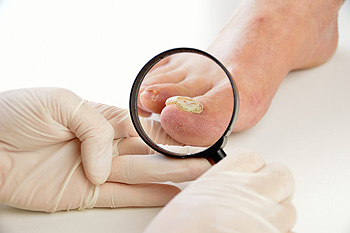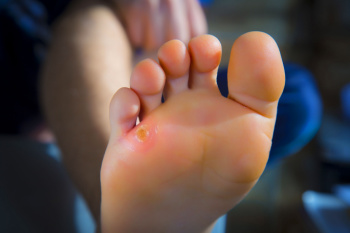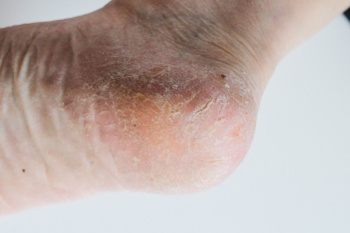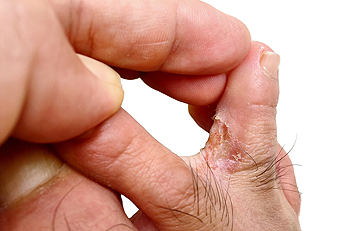
A toenail infection, known as onychomycosis when caused by fungus, can affect the way your nails look and feel. Infected toenails often become thick, brittle, and discolored, turning yellow, brown, or even white in appearance. The surface may develop ridges, crumble at the edges, or lift away from the nail bed. Warm and damp environments, such as heavy work boots or locker room floors, can encourage fungal growth, making toenails particularly vulnerable. In addition to fungal infections, bacteria can also infect the nail, leading to swelling, redness, and discomfort around the nail fold. These changes may interfere with walking, cause pain when wearing shoes, or increase the risk of further foot problems. A podiatrist can perform an examination, remove a small sample of nail if needed, and determine the cause of the infection. Early treatment helps prevent complications and restores nail health. If you believe you have a toenail infection, it is suggested that you make an appointment with a podiatrist for a diagnosis and treatment.
For more information about treatment, contact one of our podiatrists of Foot and Ankle Clinics, PA. Our doctors can provide the care you need to keep you pain-free and on your feet.
Toenail Fungus Treatment
Toenail fungus is a condition that affects many people and can be especially hard to get rid of. Fortunately, there are several methods to go about treating and avoiding it.
Antifungals & Deterrence
Oral antifungal medicine has been shown to be effective in many cases. It is important to consult with a podiatrist to determine the proper regiment for you, or potentially explore other options.
Applying foot powder on the feet and shoes helps keep the feet free of moisture and sweat.
Sandals or open toed shoes – Wearing these will allow air movement and help keep feet dry. They also expose your feet to light, which fungus cannot tolerate. Socks with moisture wicking material also help as well.
If you have any questions please contact our offices located in Woodbury, West St. Paul, and Edina, MN . We offer the newest diagnostic and treatment technologies for all your foot and ankle needs.





